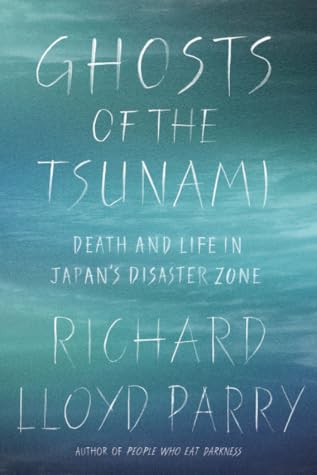More on this book
Community
Kindle Notes & Highlights
Read between
March 11 - March 21, 2024
It was the biggest earthquake ever known to have struck Japan, and the fourth most powerful in the history of seismology. It knocked the Earth ten inches off its axis; it moved Japan four feet closer to America.
The earthquake and tsunami caused more than $210 billion of damage, making it the most costly natural disaster ever.
“All at once … something we could only have imagined was upon us—and we could still only imagine it,” wrote Philip Gourevitch. “That is what fascinates me most in existence: the peculiar necessity of imagining what is, in fact, real.”
In Japanese, domestic leave-taking follows an unvarying formula. The person departing says itte kimasu, which means literally, “Having gone, I will come back.” Those who remain behind respond with itte rasshai, which means “Having gone, be back.” Sayonara, the word that foreigners are taught is the Japanese for “goodbye,” is too final for most occasions, implying a prolonged or indefinite separation. Itte kimasu contains a different emotional charge: the promise of an intended return.
“It was hell,” Hitomi said. “Everything had disappeared. It was as if an atomic bomb had fallen.”
Only two forces can inflict greater damage than a tsunami: collision with an asteroid or nuclear explosion.
“Nothing is capable of changing the situation. It’s not about the passing of time. It’s not about kind words. It’s not about psychological support. It’s not about money. None of that can change anything. There’s a space that is empty and that will never be filled.”
When you’ve got the truth in your hand, what are you going to do with it?”
Was it really a source of consolation to people newly homeless and bereaved to be told, in effect, to tough it out, like a marathon runner? Ganbarō always seemed to me a word in which empathy with those suffering was compromised by the implication that what they were going through would be good for them in the long run.
In Buddhism, the forty-ninth day after death marks the moment when the departed soul enters the afterlife.
“We realized that, for all that we had learned about religious ritual and language, none of it was effective in facing what we saw all around us. This destruction that we were living inside—it couldn’t be framed by the principles and theories of religion. Even as priests, we were close to the fear that people express when they say, ‘We see no God, we see no Buddha here.’ I realized then that religious language was an armor that we wore to protect ourselves, and that the only way forward was to take it off.”


